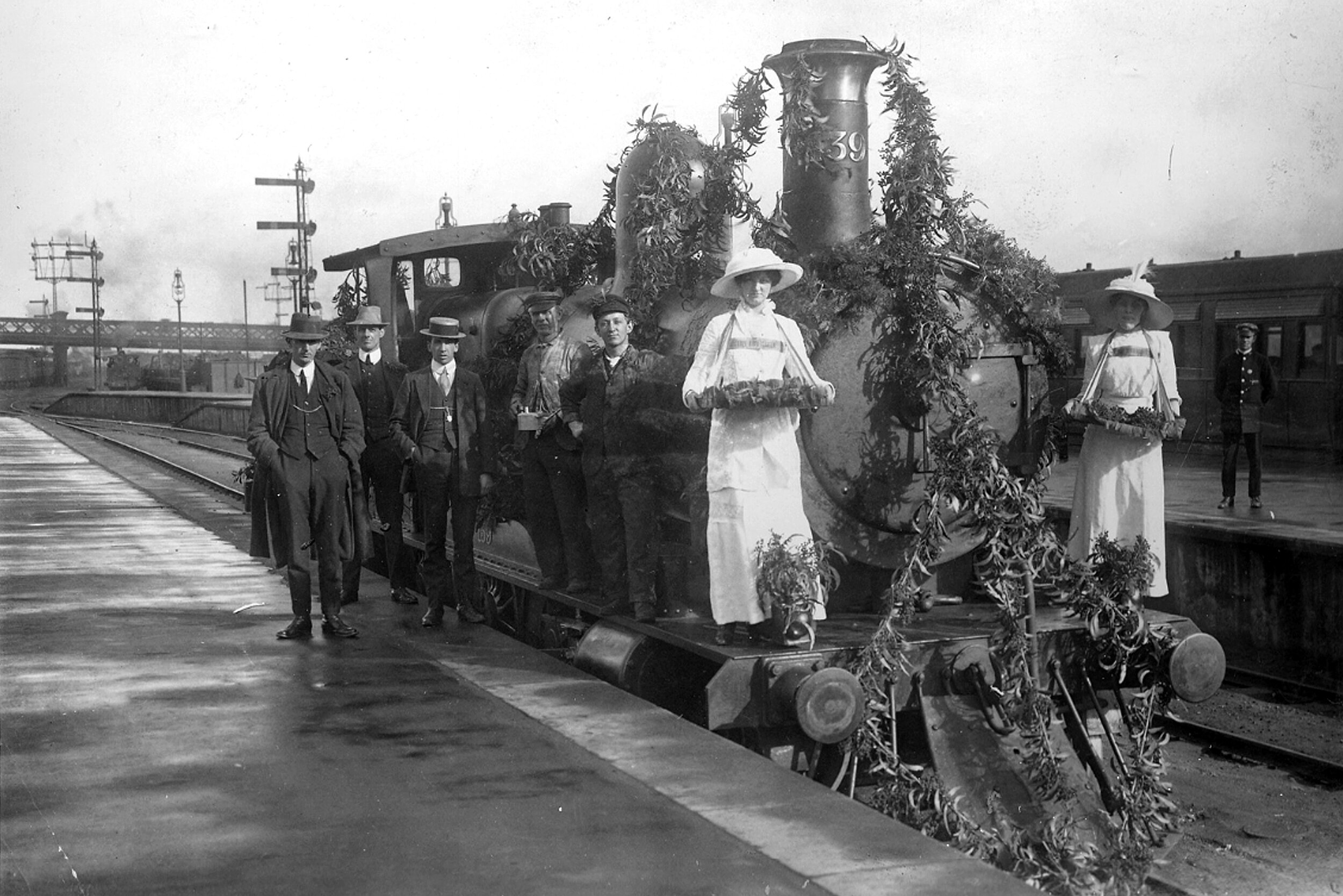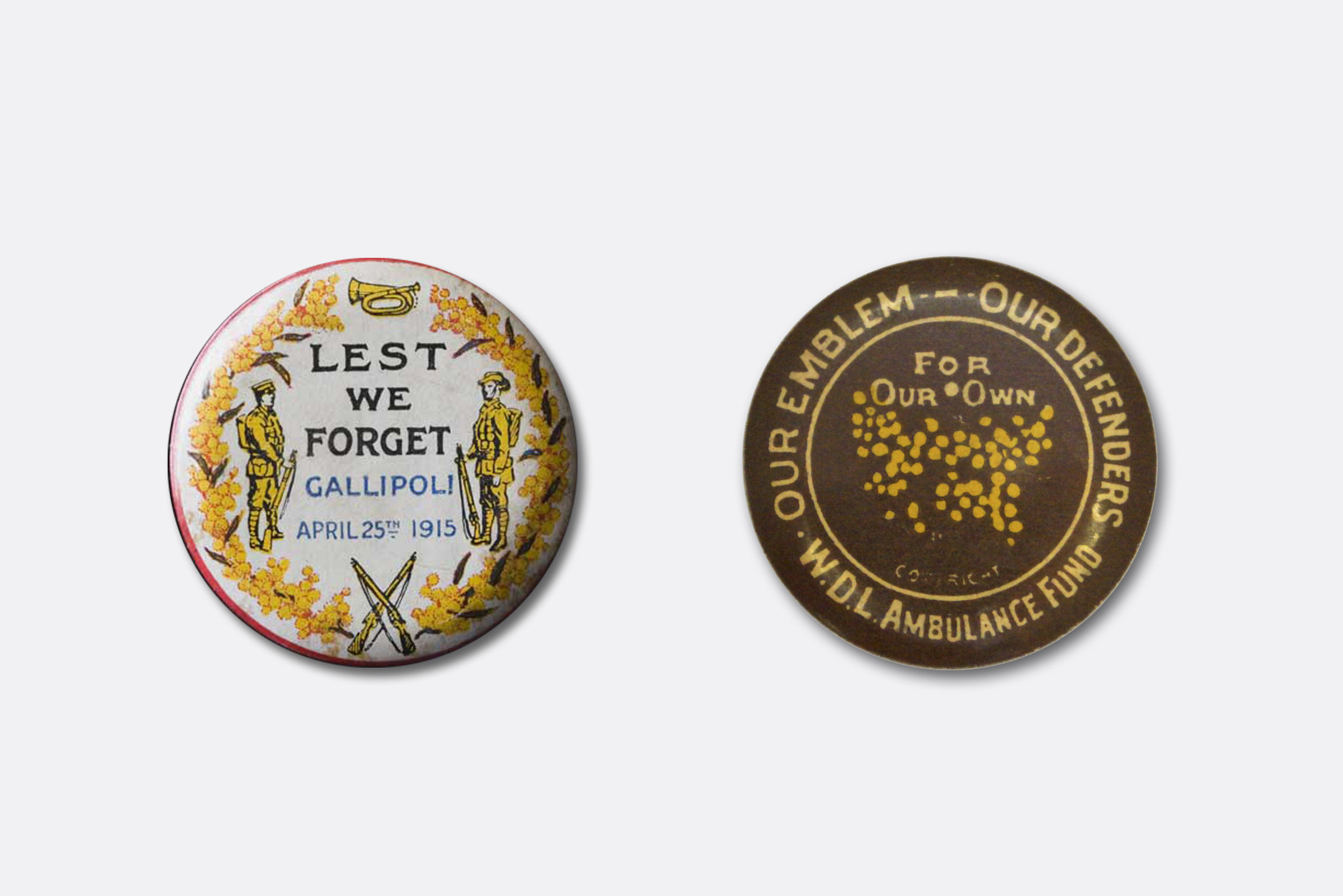What do wattles mean to Australians?
“The wattle is our only authentic national symbol
– totally, unambiguously of this land. It is not
conflicted or qualified in its identity or loyalty.
It is eloquently, elegantly and undoubtedly
Australian.”
Australia’s emblem
Australia’s national flower is the golden wattle (Acacia pycnantha).
Australia’s national colours of green and gold were inspired by the colours of the wattle. Various shades of green and gold have represented Australia internationally since 1899.
Wattle has been a culturally important plant for Aboriginal and Torres Strait Islander peoples for millennia.
The first use of wattle as a symbol of Australia dates back to 1838 in Hobart, Lutruwita / Tasmania.
Wattle Day on the first day of Spring (Sept 1) has been a national day of celebration in Australia since the early 1900s.
The coat of arms of Australia features a spray of wattle.
All of Australia’s ”next generation” banknotes feature representations of wattles (Acacia).
All of Australia’s sporting teams wear wattle-inspired green and gold uniforms.
After the Gallipoli campaign, Australian soldiers planted wattle as a symbol of remembrance.
A living expression of our land
The golden wattle is representative of ALL Australian wattles.
Wattle or Acacia species are the largest genus in the Australian native flora, followed by eucalyptus. Within Australia, there are 1069 accepted species of Acacia and almost all of these have evolved only in Australia.
Wattle is found in every state and territory, and virtually in every ecosystem in the country, from rainforests to mountain areas, to deserts, even sand along the beaches.
Wattle is a remnant Gondwanaland species and has been in this land for 35 million years.
Source: World Wide Wattle
“I love the spring. It means the wattle comes out again. It is a symbol of everything one loves about Australia and the ideal of the uniqueness of Australia.”
Wattles in First Nations cultures
“Aboriginal and Islander peoples have used wattle for thousands of years as a season marker (a sign that the whales are coming), as a source of food, medicine and the raw material for hunting and sound instruments.”¹
Many regions or tracts of land across Australia are known by the Aboriginal names for the wattles that grow there, such as Myall, Mulga, Brigalow and Gidgee.
Boomerangs are traditionally fashioned from Mulga or Black Wattle.
Learn more:
Nummerak – Ngunnawal for wattle
by Suzette Searle, Wattle Day Association.
Wattle on the Wambuul, NAIDOC celebrations in Dubbo, ABC Open Western Plains NSW.
Wattle (Acacia) and its many uses, koorihistory.com
“We know that when the Black Wattle is flowering the Blackfish are running; when the seas are rough, the mullet are running; when the cobwebs are flying, it’s time to get swan eggs; as farmers know, the floods are coming when birds start nesting higher in the trees. Also we know it’s not the time to light a fire if you drop a leaf and the wind blows it away. Just a case of being more aware of your environment.”
A symbol of Australian excellence
We honour our nation’s best with the Order of Australia awards, the insignia and ribbon of which is designed around the wattle blossom.
Wattle also decorates many other national honours including the National Emergency Medal and the Australian Defence Force Long Service Medal.
Wattle is entwined with Australia’s military history
During the First World War sprigs of wattle were often sent with letters to soldiers on service abroad, as a reminder of home. Boxes filled with sprigs of pressed wattle were also sent to hospitals for distribution to wounded Anzacs in Egypt, France and England.
Wattle sprigs were sold by the Red Cross to raise money for the war effort throughout the First World War.
During the evacuation of Gallipoli, Chaplain Walter Dexter scattered wattle seeds as he left, he wrote “If we have to leave here, I intend that a bit of Australia shall be here.”
Australia’s first Anzac memorial was erected in Wattle Grove in Adelaide on Wattle Day in 1915.
Wattle decorates many of Australia’s military honours, awards and standards.
The Unknown Australian Soldier was interred in the Hall of Memory at the Australian War Memorial on 11 November 1993. He was buried in a Tasmanian blackwood coffin, on which were placed a bayonet and a sprig of wattle.
“I went up the gullies and through the cemeteries, scattering silver wattle seed. If we have to leave here, I intend that a bit of Australia shall be here. I soaked the seed for about 20 hours, and they seem to be well and thriving.”
A symbol of unity
Wattle grows in all parts of the Australian continent.
“Its presence in our landscape for so long may also be the key to its ability to unite us all. In simple terms, wattle has welcomed us all. It has welcomed Aboriginal and Torres Strait Islander peoples, it has welcomed those who came with and followed James Cook and Arthur Phillip. It has welcomed the great wave of past World War II migrants. Last week it welcomed 200 new citizens at ceremonies in Canberra. It is in a sense the entre card of our land and the modern Australian nation.”²
In the final verse of Banjo Paterson’s poem We're All Australians Now, published in 1915 as an open letter to the troops at The Dardanelles, he refers to the wattle as a symbol of unity.
“Fight on, fight on, unflinchingly,
Till right and justice reign.
Fight on, fight on, till Victory
Shall send you home again.
And with Australia’s flag shall fly
A spray of wattle-bough
To symbolise our unity —
We’re all Australians now.”
At the heart of Australia’s sporting traditions
All of Australia’s national sporting teams wear wattle inspired green and gold uniforms.
Green and gold were first used by the Australian cricket team that toured England in 1899. The uniforms consisted of a green cap, known today as the ”baggy green” and green blazers detailed with a gold coat of arms.
The Australasian Olympic team first adopted ”green and wattle” in 1908.
Wattle features in the victory song of the Australian Cricket team: “Under the Southern Cross I stand, a sprig of wattle in my hand”
Learn more:
The origin of the green and gold by Peter Sharpham
History of Australia's National Colours Pinterest board
“After some strenuous ‘battling’ by Mr Hill, a sum has been set aside for the purpose, and for the first time in the history of the Olympic Games, Australia’s men will step forth headed by a handsome banner, and costumed alike in ‘green and wattle’ of the land so dear to them.”
Part of Australia’s colonial history
Wattle was an important pioneer species. Colonists used wattle branches in the construction of wattle and daub houses.
A symbol of resilience and the
Australian spirit
Wattles are one of the first plants to germinate after a bushfire and are seen as a symbol of resilience, renewal, of people starting again after adversity – the Australian spirit.
Image courtesy of Stutravel
A symbol of remembrance and new beginnings
Traditionally Australians have used wattle as a symbol of national solidarity in times of crisis.
Wattle is often worn at Australian citizenship ceremonies, where it is linked to ideas of new beginnings.
The first day of spring in Australia is National Wattle Day. Themes of rebirth and renewal often use symbols from the spring season.
“This here’s the wattle, the emblem of our land.
You can stick it in a bottle, you can hold it in your hand.
Amen!”
Notes:
Terry Fewtrell, Wattle Day – An Essential Part of the Australian Narrative, September 1, 2011.
Terry Fewtrell, Why Wattle is deep in our psyche, Wattle Day Association, 2014.











